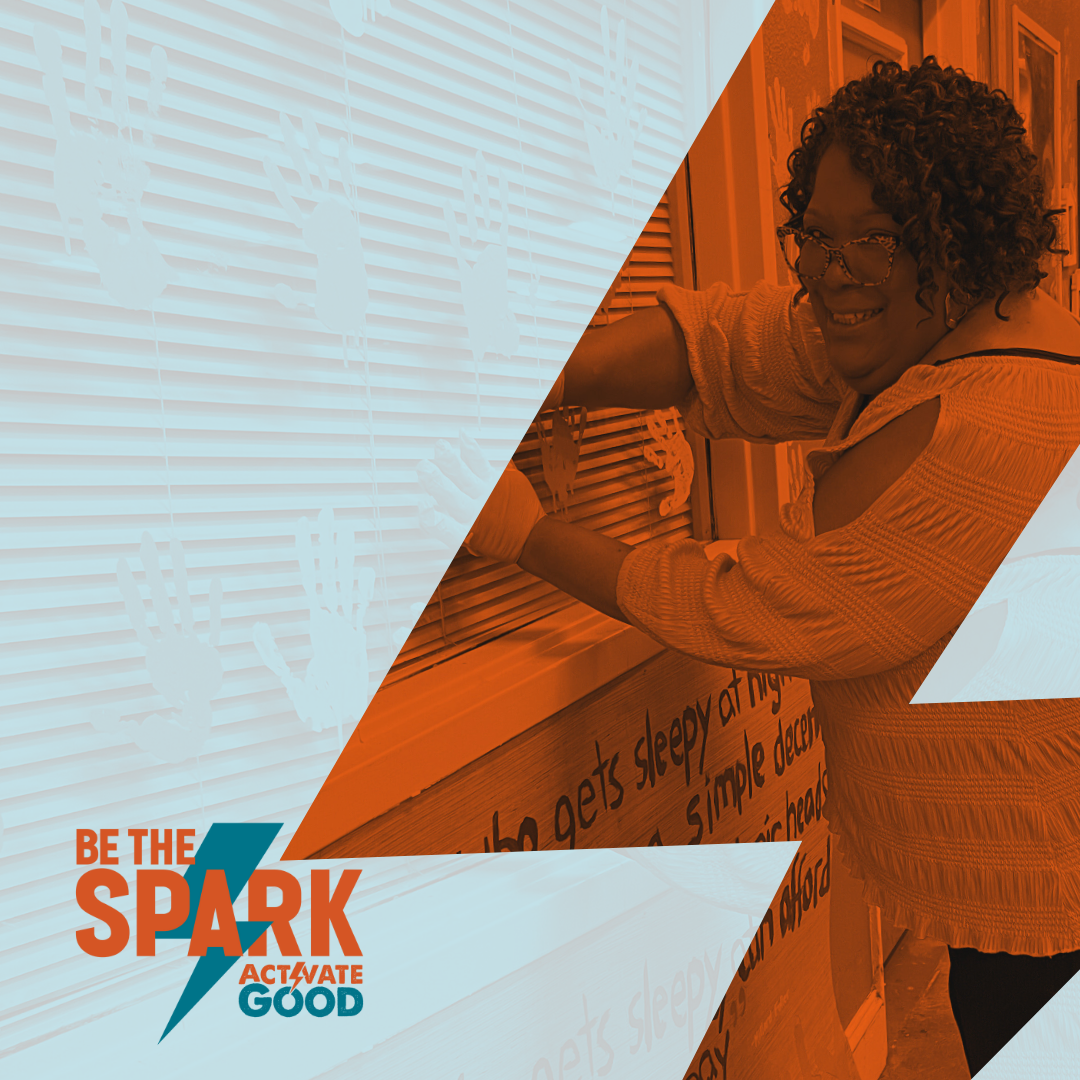Across Raleigh, Durham, and Chapel Hill, many of our neighbors are facing the growing challenges of food insecurity and homelessness.
As Hunger & Homelessness Awareness Week (Nov. 16–22) approaches, communities across the country, including right here in the Triangle, are coming together to learn, volunteer, and take action. This week is a chance to recognize those impacted and think about how we can each make a difference.
A majority of Americans (67%) live paycheck to paycheck, meaning they have little or no money left after paying bills. That means many families are just one missed paycheck away from needing food or shelter.
To better understand these urgent challenges, let’s look at recent data about hunger and homelessness in the Triangle and North Carolina to explore how you can help.
1. Homelessness is rising across the Triangle
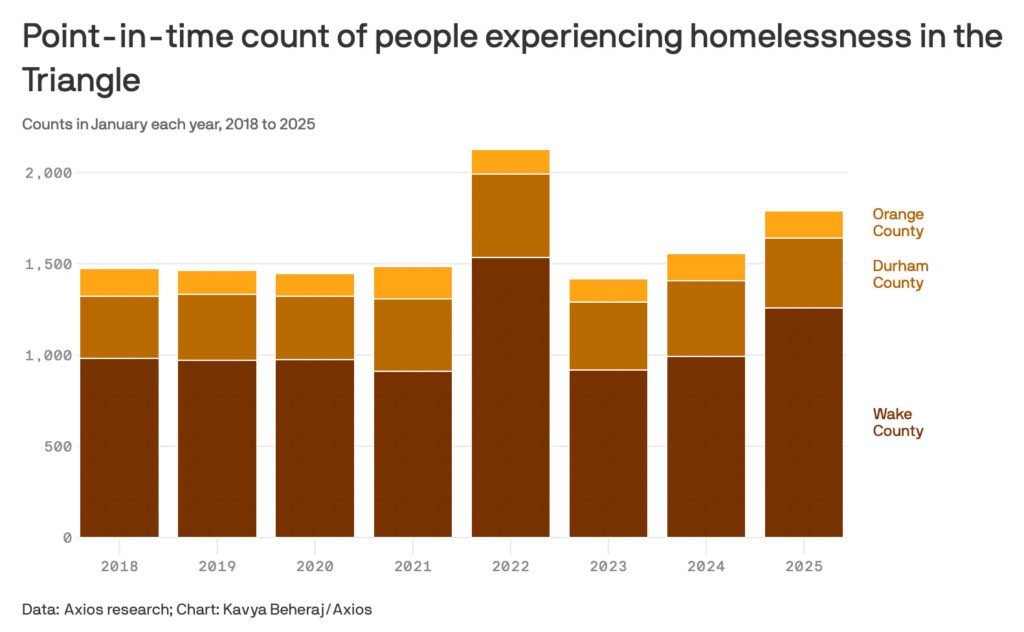 Homelessness is growing nationally and increasing locally as well. Each January, local housing, shelter, and outreach organizations participate in the HUD Point-in-Time (PIT) Count, a coordinated census that captures the number of people experiencing homelessness on a single night.
Homelessness is growing nationally and increasing locally as well. Each January, local housing, shelter, and outreach organizations participate in the HUD Point-in-Time (PIT) Count, a coordinated census that captures the number of people experiencing homelessness on a single night.
In 2025, the PIT Count identified 1,788 people experiencing homelessness across Wake, Durham, and Orange Counties, a 15% increase from the previous year. Wake County saw the sharpest rise at 27%, reflecting the Triangle’s ongoing struggle with housing affordability.
Statewide, the North Carolina Housing Finance Agency (NCHFA) reported that the 2024 PIT Count recorded 11,626 individuals experiencing homelessness across North Carolina, a 19% increase from 2023. According to NCHFA’s analysis, this marks one of the largest single-year increases in the past decade.
Behind the numbers are real people. Whether it’s families being priced out after rent hikes or individuals recovering from illness or job loss. As awareness grows, so does the opportunity for communities to respond with compassion, resources, and collective action.
2. Housing costs and shortages are driving the crisis
The Triangle’s housing market has grown quickly, but affordable options haven’t kept up.
According to the U.S. Department of Housing and Urban Development’s Fair Market Rent Data (2025), the Fair Market Rent for a two-bedroom apartment in the Raleigh–Cary area is $1,763 per month, about 7% higher than last year.
For many families, even working full-time doesn’t guarantee safe, stable housing. According to the National Low Income Housing Coalition’s Out of Reach 2024 report, a renter in the Raleigh–Cary area needs to earn about $29 an hour to afford a modest two-bedroom apartment without spending more than 30% of their income. A worker earning $15 an hour would have to work more than 80 hours a week (essentially two full-time jobs) just to pay the rent.
Having a safe place to live helps people keep their jobs, care for their families, manage their health, and plan for the future. More communities are now using the Housing First approach, which focuses on providing housing first, then connecting people to other support services.
One example is Raleigh’s Bringing Neighbors Home pilot program, which helps residents move from encampments into permanent housing with case management and rental support. The program aims to help about 45 households find stable homes and guide future efforts to address unsheltered homelessness in Raleigh.
Even with housing support, many families still face tough choices. As living costs rise, food insecurity remains a significant challenge for working households in the Triangle.
3. Hunger still impacts thousands, mostly working families
As living costs continue to rise, more families are struggling to put food on the table. These challenges are deeply connected. When most of a household’s income goes to rent, there’s often not enough left for groceries.
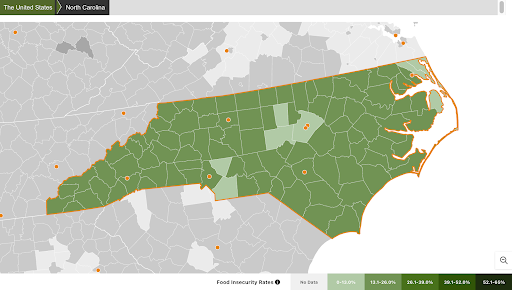 According to Feeding America’s Map the Meal Gap (2023), about 12% of Wake County residents, roughly 130,000 people, struggle with food insecurity. In Durham County, nearly 14% of residents experience food insecurity (Feeding America’s Map the Meal Gap, 2023).
According to Feeding America’s Map the Meal Gap (2023), about 12% of Wake County residents, roughly 130,000 people, struggle with food insecurity. In Durham County, nearly 14% of residents experience food insecurity (Feeding America’s Map the Meal Gap, 2023).
In North Carolina, approximately 1.4 million people depend on SNAP benefits to feed themselves and their families. That’s approximately 13% of our state’s population, or about one in ten of our neighbors.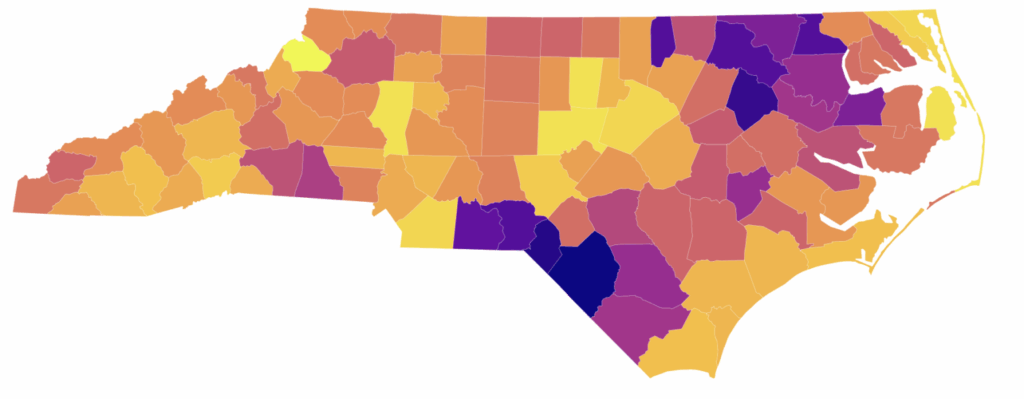
The early November pause in SNAP benefits brought the need for this critical safety net into sharp focus. On average, a family of four in the Triangle can spend $600-$800 per month on groceries. These are costs that are difficult to meet when you are struggling to pay for rent, transportation, and other essential living expenses.
Mobile markets and community food programs serve as a lifeline for families who struggle to afford groceries. Local organizations, such as the Inter-Faith Food Shuttle and the Food Bank of Central & Eastern North Carolina, deliver fresh produce to neighborhoods in need and offer nutrition education to help families create healthy, affordable meals.
Just a few hours of volunteering, sorting donations, or helping with food distribution can help feed hundreds of neighbors. Your time and effort can make a real difference.
4. Myths Vs. Facts For Hunger & Homelessness
Even in thriving communities like the Triangle, misconceptions about hunger and homelessness persist. Let’s clear up a few common misconceptions.
Myth 1: Homelessness only affects people who are unemployed.
Fact: Many people experiencing homelessness work full-time or multiple jobs, but still can’t afford stable housing. The gap between wages and rent continues to widen across the Triangle.
Myth 2: Food insecurity only impacts people living in poverty.
Fact: Many working families earn too much to qualify for food assistance yet still struggle to afford groceries. Rising housing and childcare costs often force families to make impossible trade-offs.
Myth 3: Hunger and homelessness are isolated issues.
Fact: As previously mentioned, these challenges are deeply connected. When people spend most of their income on housing, food is often the first expense cut. Addressing one means addressing both.
Understanding the reality helps us respond with compassion and lasting solutions.
5. Local solutions are working! How you can help
Fortunately, the Triangle is home to many programs that help individuals and families move from crisis to stability.
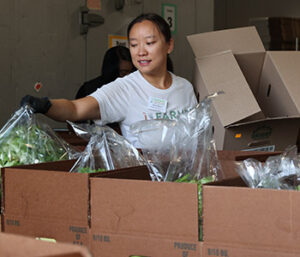
Check out a list of featured local nonprofits making an impact. These organizations rely on volunteers, donors, and community partners to make their work possible.
Ways you can help today:
- Volunteer: Join a meal service, pack food boxes, assist with housing outreach, or share your professional skills.
- Donate: Give funds, pantry items, or in-kind supplies. Recurring gifts help organizations plan and scale.
- Advocate: Support policies that fund affordable housing, expand food access, and invest in community health.
- Educate & share: Have conversations with your friends, family, and coworkers. Awareness drives action.
Small, consistent actions add up, especially when our whole community gets involved.
Together, we can create a more caring Triangle.
Hunger and homelessness in the Triangle are complex challenges, but they can be solved. Rising rents, limited affordable housing, and food insecurity all play a role, but with collaboration, compassion, and ongoing effort, we can make a difference.
Every volunteer shift, donation, and conversation brings us closer to a Triangle where everyone has a safe place to live and enough to eat.
Find volunteer opportunities that support hunger and homelessness through Activate Good. Please sign up for a shift, invite friends or coworkers to join you, or organize a group project. Sharing this blog with your network can also inspire others to get involved. Start by choosing one way to help today!

